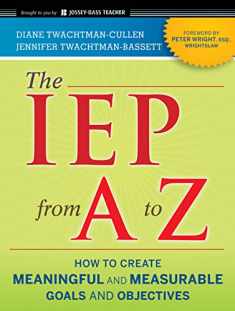
Guide to Writing Quality Individualized Education Programs (2nd Edition)
Book details
Summary
Description
This bestselling guide helps users reduce the complexity of IEP development to seven basic steps, based on the requirements of IDEA 2004. It helps prepare teacher candidates with excellent IEP-writing skills, and gives inservice teachers an accurate resource for their continuing professional development in this critical area.
Features include step-by-step instruction for IEP development, using explanation, modeling, practice and formative feedback for self-guided individual or group learning.
The introduction of the second edition provides a quick overview of special education and the requirements of IDEA 2004. Additionally, the second edition is based on new case studies with complete IEPs for four elementary and secondary students with mild/moderate and severe disabilities, including transition planning. It also provides practice in differing requirements for students taking alternative assessments and features “Answers to Tricky Questions About IEPs” that teachers often encounter.


We would LOVE it if you could help us and other readers by reviewing the book
Book review





